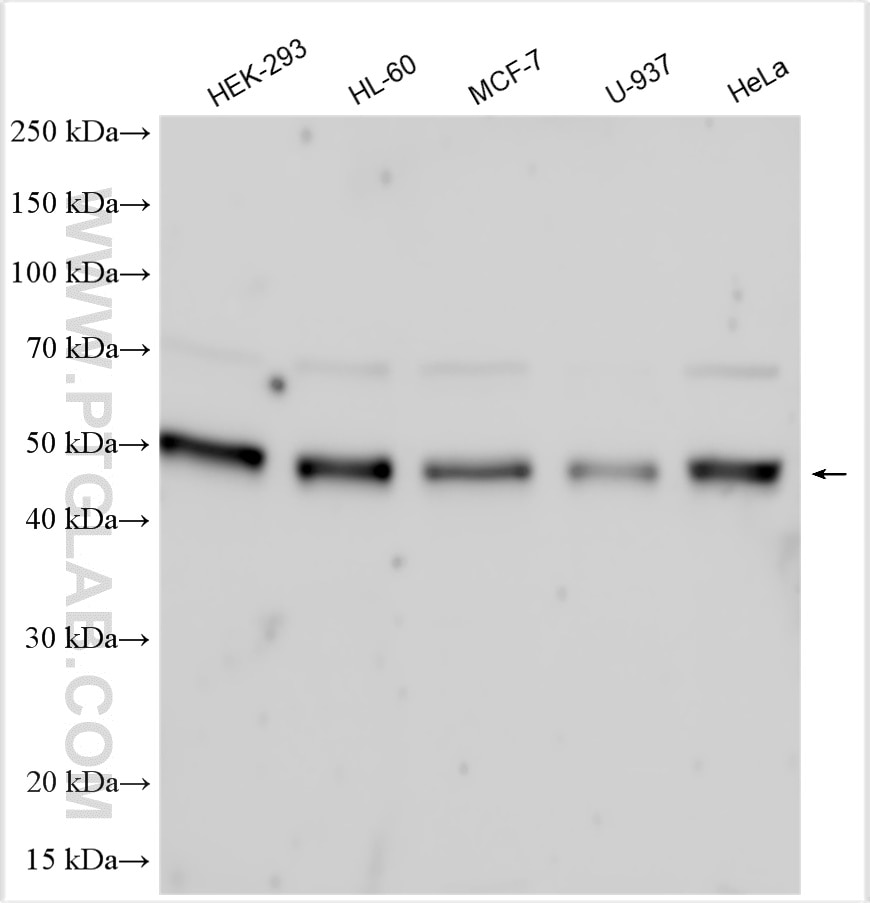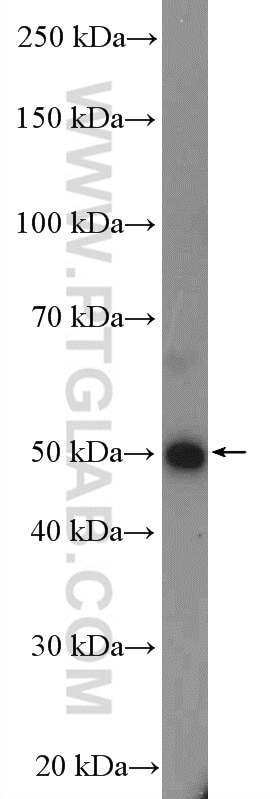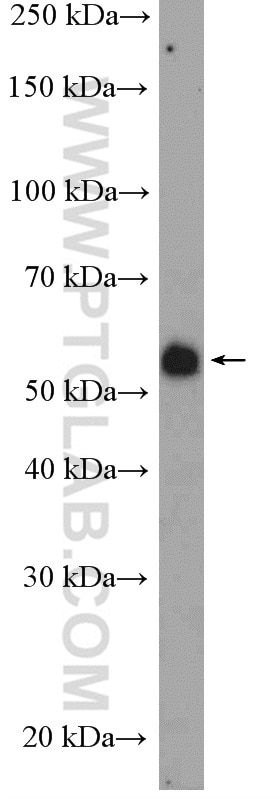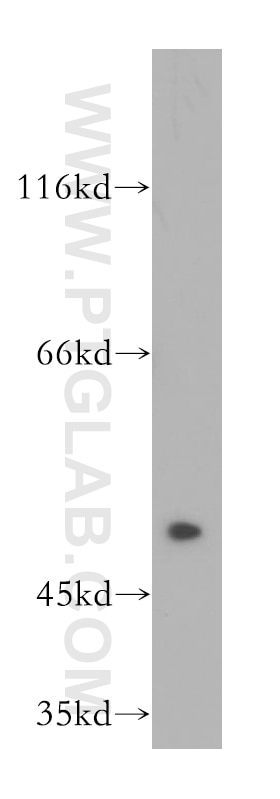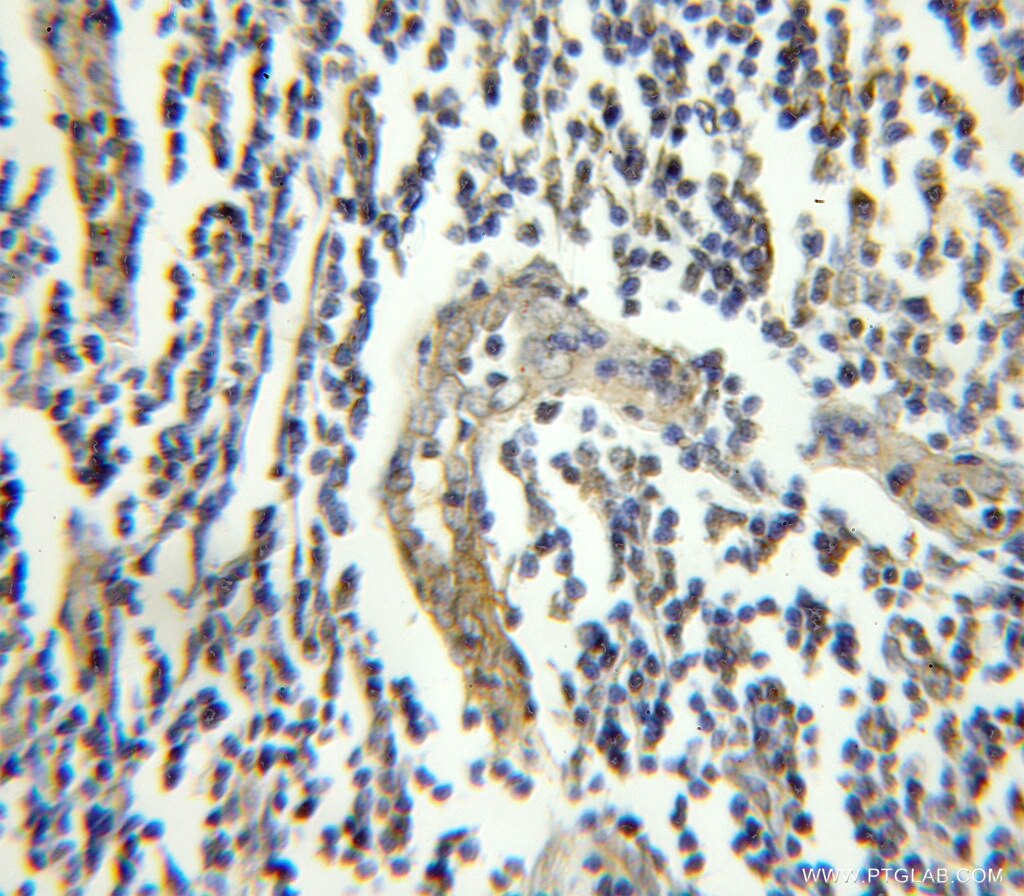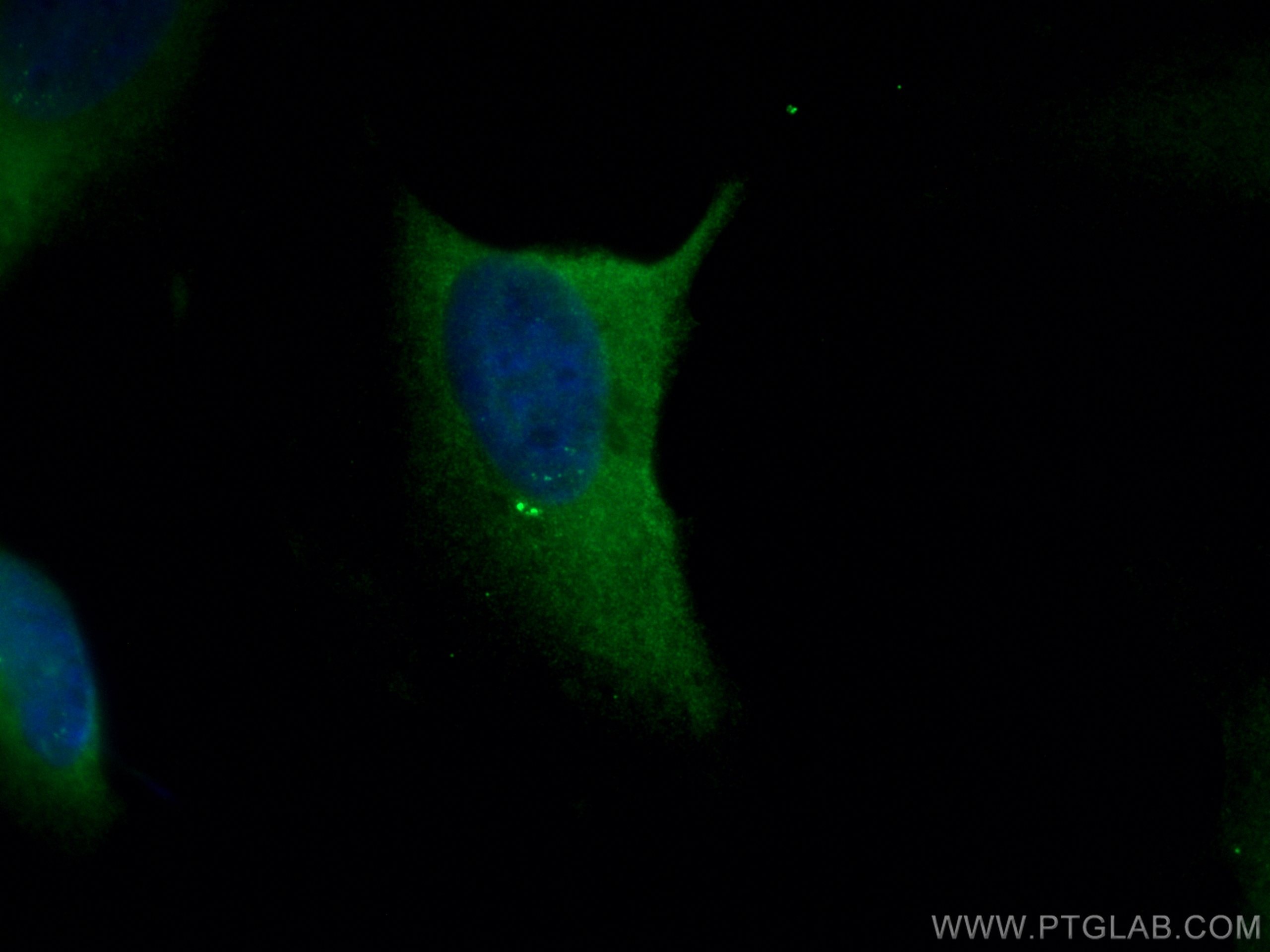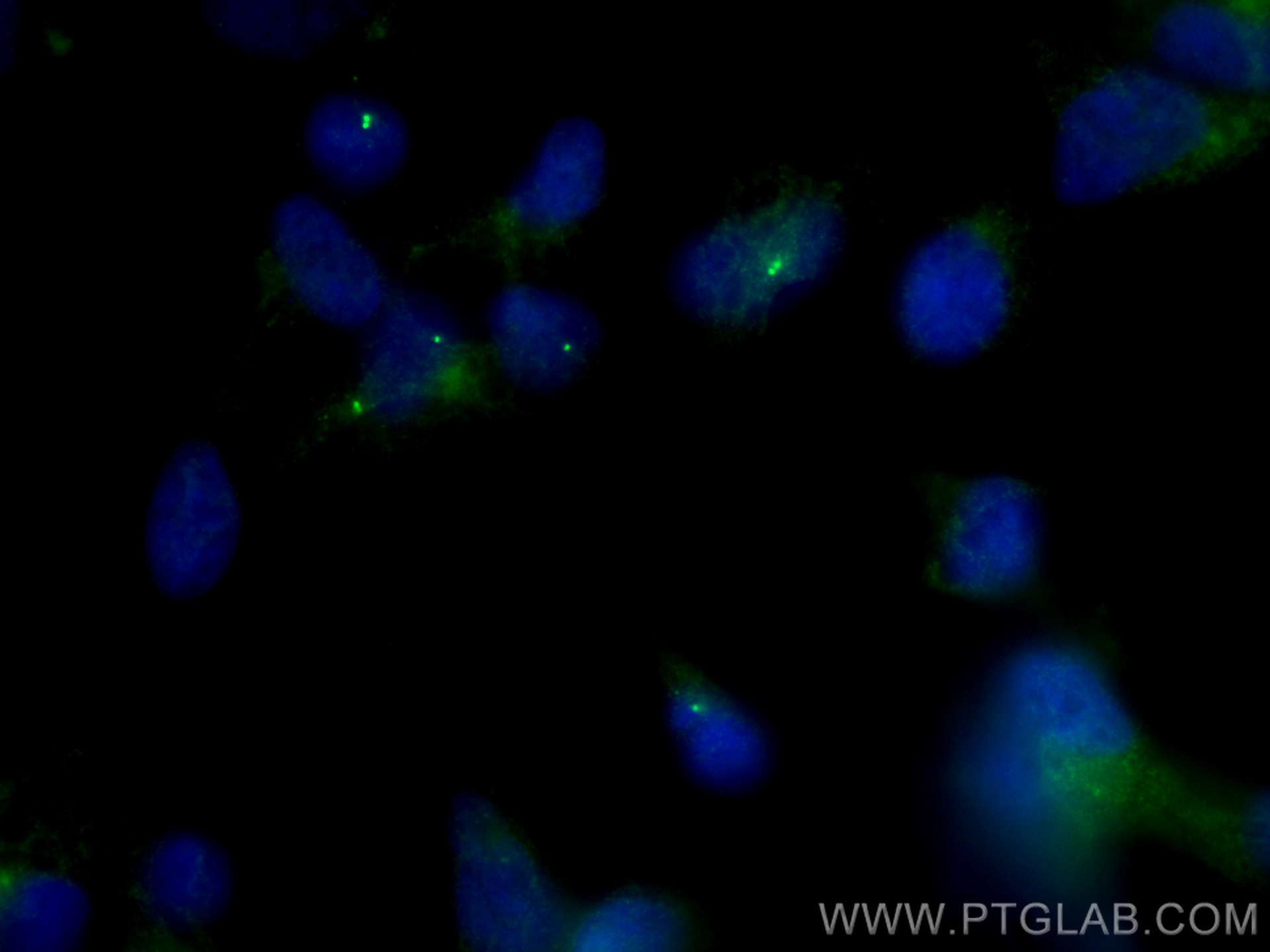Product Information
11343-1-PBS targets FGFR1OP in WB, IHC, IF/ICC, Indirect ELISA applications and shows reactivity with human, mouse, rat samples.
| Tested Reactivity | human, mouse, rat |
| Host / Isotype | Rabbit / IgG |
| Class | Polyclonal |
| Type | Antibody |
| Immunogen |
CatNo: Ag1891 Product name: Recombinant human FGFR1OP protein Source: e coli.-derived, PGEX-4T Tag: GST Domain: 1-374 aa of BC011902 Sequence: MAATAAAVVAEEDTELRDLLVQTLENSGVLNRIKAELRAAVFLALEEQEKVENKTPLVNESLRKFLNTKDGRLVASLVAEFLQFFNLDFTLAVFQPETSTLQGLEGRENLARDLGIIEAEGTVGGPLLLEVIRRCQQKEKGPTTGEGALDLSDVHSPPKSPEGKTSAQTTPSKKANDEANQSDTSVSLSEPKSKSSLHLLSHETKIGSFLSNRTLDGKDKAGLCPDEDDMEGDSFFDDPIPKPEKTYGLRNEPRKQAGSLASLSDAPPLKSGLSSLAGAPSLKDSESKRGNTVLKDLKLISDKIGSLGLGTGEDDDYVDDFNSTSHRSEKSEISIGEEIEEDLSVEIDDINTSDKLDDLTQDLTVSQLSDVADY Predict reactive species |
| Full Name | FGFR1 oncogene partner |
| Calculated Molecular Weight | 43 kDa |
| Observed Molecular Weight | 50 kDa |
| GenBank Accession Number | BC011902 |
| Gene Symbol | FGFR1OP |
| Gene ID (NCBI) | 11116 |
| RRID | AB_2103362 |
| Conjugate | Unconjugated |
| Form | Liquid |
| Purification Method | Antigen affinity purification |
| UNIPROT ID | O95684 |
| Storage Buffer | PBS only, pH 7.3. |
| Storage Conditions | Store at -80°C. |
Background Information
The fibroblast growth factor receptor 1 oncogene partner (FGFR1OP), FOP, is a centrosomal protein that is involved in the anchoring of microtubules to subcellular structures. Three isoforms have been produced by alternative splicing. A chromosomal aberration involving FGFR1OP may be a cause of stem cell myeloproliferative disorder (MPD). MPD is characterized by myeloid hyperplasia, eosinophilia and T-cell or B-cell lymphoblastic lymphoma and progresses to acute myeloid leukemia.

